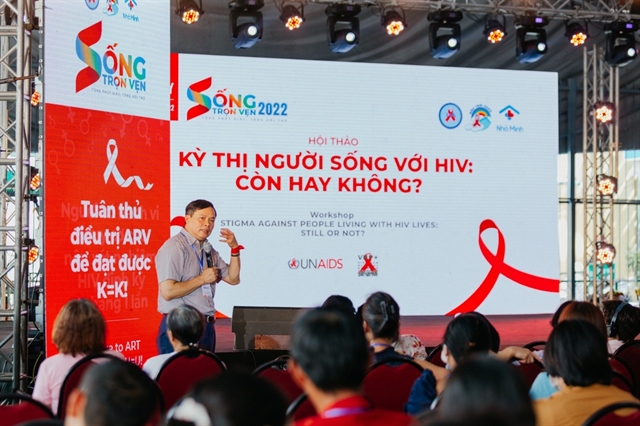 Politics & Law
Politics & Law

Experts yesterday called on ASEAN to play a central role in balancing the rivalry between China and the US in the Asia Pacific region.
HÀ NỘI – Experts yesterday called on ASEAN to play a central role in balancing the rivalry between China and the US in the Asia Pacific region.
The economic and military rise of China - and the Asia pivot policy of President Obama’s presidency - have resulted in more intense competition between the two world powers. This has created a dilemma for the ASEAN bloc, said Lê Hồng Hiệp of HCM City University of Social Sciences and Humanities at an international conference held in Hà Nội yesterday.
More than 70 officials and experts from universities and think tanks in the Asian Pacific region gathered to discuss the US-China relationship and its security impacts in Southeast Asia – one of the most dynamic economic regions in the world.
“The hardest thing (for ASEAN) is to influence both China and the US, but not take sides with either of them,” Hiệp said. “ASEAN is economically connected to China, yet relies on the US for security”.
Despite being in close economic relationship with China – the largest individual ASEAN trading partner, accounting for 14 per cent of ASEAN’s trade – the 10-member bloc is constantly concerned about China’s increasingly aggressive behaviour in the South China Sea. China’s massive land reclamation ventures and military installations in the South China Sea are forcing worried neighbouring countries to look to the US for security support.
The Philippines - one of the claimant countries in the South China Sea dispute - welcomed the US Navy back to its Subic Bay military base in November last year. Such a thing has never happened before in the two decades since the last American left the base.
Professor Su Hao of China Foreign Affairs University says that China’s ongoing land reclamations on Spratly Island is just a method which China chose to enhance its presence in the South China Sea.
“The (man-made islands) will help to balance the presence of China and other countries,” he said.
Other nations, including Việt Nam and Malaysia, also made land reclamations on the Spratly Islands as of decades ago, said Hà Anh Tuấn from Việt Nam’s Institute of East Sea Studies. Yet total past land reclamations constitute only about six per cent of what China has built over the last two years. China’s land reclamations now cover more than 2,900 acres, according to the Pentagon.
“That is the difference in the nature of the land reclamations made by China and other claimants”.
Professor Carlyle A. Thayer of Australia’s University of New South Wales calls China’s actions in the disputed South China Sea “a whole new form of colonisation”.
“It is unilateral and not in cooperation with any other countries."
Tuấn says that it is hard to expect China to stop its assertive actions now. So the challenges which ASEAN as a whole now faces include choosing between group unity and national interests, as well as balancing ASEAN’s relationships with China and the US.
“The problem is that ASEAN always acts based on the principle of consensus. Which means that the bloc can’t reach an agreement if there is one member against it,” says Hiệp.
“Consensus is the foundation of ASEAN. But the principles of consensus may also prevent ASEAN’s unity”. – VNS


 (1).JPG)

